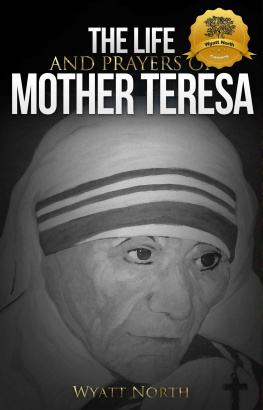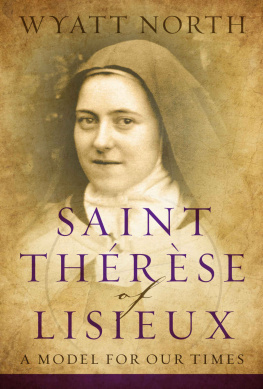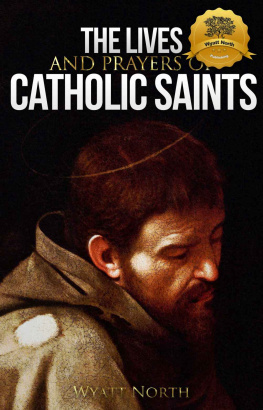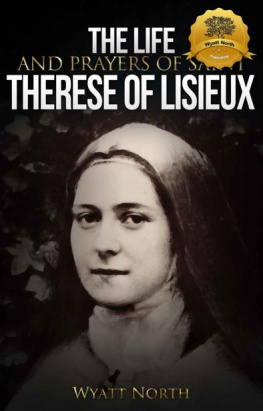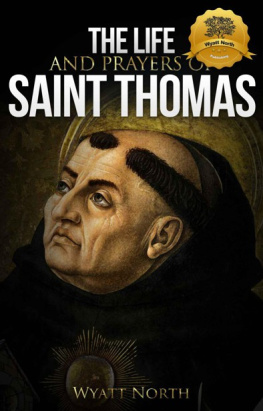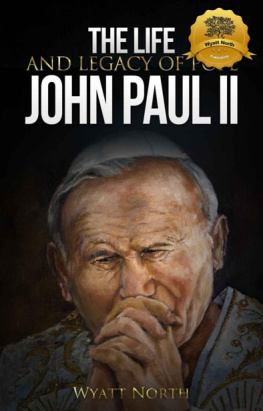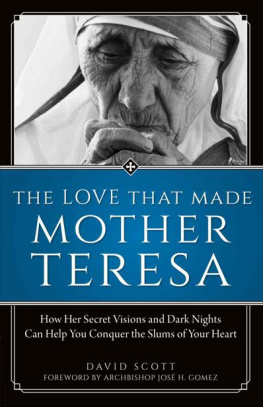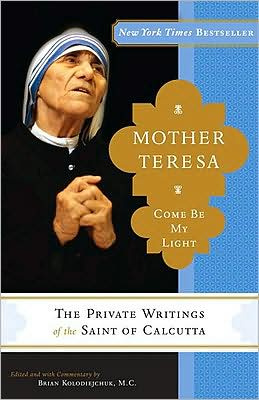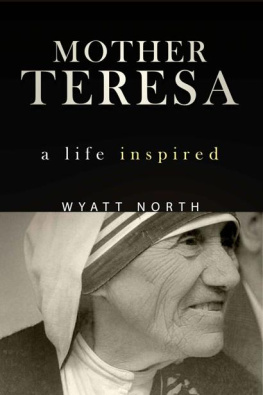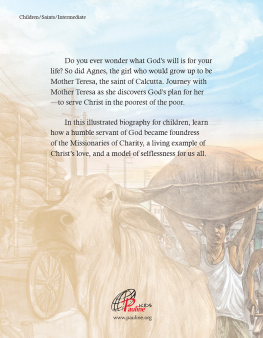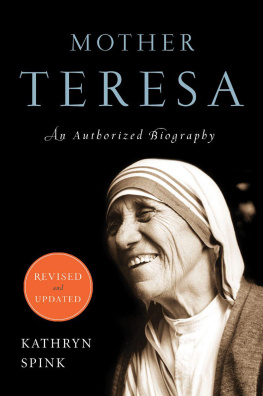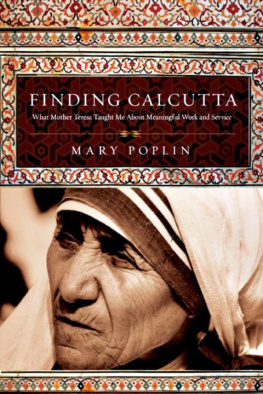One part biography, one part prayer book, The Life and Prayers of Mother Teresa is an essential for any Christian.
Mother Teresa wanted to do something beautiful for God. At the time of her death in 1997, there were nearly 4,000 Missionaries of Charity Sisters established in 610 houses in 123 countries. The congregation did not cease growing with her death. Today, there are more than 5,000 Sisters. The work continues to thrive as the network of Missionaries of Charity continues to operate centers in countries throughout the world.
In 1985, Mother Teresa was invited to address the United Nations General Assembly. On that occasion, the Secretary General of the United Nations, Javier Prez de Cullar, called her the most powerful woman in the world.
At the end of 1999, two years after Mother Teresas death, Gallup published a poll of Americas most widely admired people of the 20th century. Mother Teresa topped the list, ahead of such luminaries as Rev. Martin Luther King, Jr., Helen Keller, Winston Churchill, and Albert Einstein.
Quick Facts
The new Quick Facts section in The Life and Prayers collection provides the reader with a collection of facts about each saint!
Born:
August 26, 1910, Skopje
Died:
September 5, 1997, Kolkata
Feast:
September 5
Beautified:
October 19, 2003, St. Peter's Basilica, Rome by Pope John Paul II
The Life of Mother Teresa
Introduction
I n 1985, Mother Teresa was invited to address the United Nations General Assembly. On that occasion, the Secretary General of the United Nations, Javier Prez de Cullar, called her the most powerful woman in the world.
At the end of 1999, two years after Mother Teresas death, Gallup published a poll of Americas most widely admired people of the 20 th century. Mother Teresa topped the list, ahead of such luminaries as Rev. Martin Luther King, Jr., Helen Keller, Winston Churchill, and Albert Einstein.
What was it about Mother Teresa that caused so very many people, both in America and around the globe, to revere this simple woman, and a few to revile her?
Childhood
T here is no doubt that the roots of Mother Teresas worldview stemmed from the loving family into which she was born. She entered the world on August 26, 1910, in Skopje, and was christened Gonxha (Little Flower) Agnes Bojaxhiu the following day. Her family were ethnic Albanians, happy and prosperous. Her parents, Nikola and Dranafile (known as Drana) had come to Skopje from the Kosovan town of Prizren, probably in pursuit of better business opportunities.
Nikola was a merchant and builder, who traveled extensively on business and spoke several languages. He was a member of the town council and quite active in public life. Both Nikola and Drana modeled generous love for the poor and strove to instill this core value in their childrenbrother Lazar, sister Aga, and the youngest, Gonxha. The parents actively supported the poor of the community, and no one in need was ever turned away from their door. Young Gonxha frequently went with her mother on errands of mercy, bringing supplies to those in need. The family prayed together daily, and also played music together. Gonxha learned the mandolin.
At the time that Gonxha lived there, Skopje was a multiethnic city in which both Albanians and Catholics were in the minority. This important feature of her background may account for Mother Theresas later tolerance of non-Catholic groups. Skopje today is the capital of the Republic of Macedonia, but it lies within the troubled Balkan Peninsula and changed status numerous times in the twentieth century. During Gonxhas infancy, the city was in the process of being liberated from five hundred years of Ottoman control. It was annexed by the Kingdom of Serbia in 1912, shortly before Albania declared independence along the Serbian border. Following W.W.I, it became part of the new Kingdom of Yugoslavia.
Although Skopje was away from the main centers of upheaval, the regional troubles eventually came home to roost for the Bojaxhiu family. Gonxhas father, Nikola, was an ardent Albanian nationalist and actively involved in nationalist causes. Key figures of the Albanian resistance frequently met in the family home. In 1919, Nikola journeyed to Belgrade for an activists meeting and returned home acutely ill. Although only forty-five and normally in vigorous health, he died a day later. The family believed he had been poisoned by political enemies. Gonxha was only eight at the time.
Now the fortunes of the family changed. Nikolas business partners abandoned his young widow, leaving the family with little more than their home. The grief-stricken Drana was forced to become the family breadwinner. She began a business dealing in needlework, cloth, and carpets. Despite their own strained finances, the devoutly religious Drana continued to feed and assist those in even worse circumstances. In later years, Mother Teresa especially remembered an alcoholic woman, abandoned by her family, whose bodily sores her mother lovingly tended. She often recalled that the worst suffering this woman experienced was her loneliness. There is no question that the model of her parents, and especially Drana, helped guide Gonxha to her vocation.
During this difficult time, the Church provided emotional and spiritual support to the Bojaxhiu family. The family regularly attended the parish church of the Sacred Heart, where Gonxha and Aga were featured singers in the church choir. They made annual pilgrimages to the nearby Madonna of the Black Mountain at Letnice, whom Mother Teresa later credited with helping decide her vocation. She felt a calling to be a missionary as early as the age of twelve, although the desire to become a nun came later.
Beginning in 1925, the parish priest was a Jesuit named Father Jambrekovic, who had a notable talent for engaging his young parishioners. Gonxha was an active member of the mixed youth group, which went on outings, but she was especially influenced by the girls group, the Sodality of Children of Mary, where she became acquainted with the Spiritual Exercises of St. Ignatius of Loyola directing her to make room for Jesus in her life. She also read deeply from the church library. Father Jambrekovic enthusiastically kept his parishioners informed about the work of Jesuit missions, particularly those in India. Gonxha was fascinated, and she was particularly drawn by accounts about the Loreto Sisters in India. By the age of eighteen, she had decided to joint them.

